10 works to learn about Grazia Varisco, pioneer of Italian kinetic art
Grazia Varisco (Milan, Italy, 1937) is a major figure in the Italian modern and kinetic art scene. She is known for her exploration of visual perceptions and spatial dynamics through the use of industrial materials and innovative techniques. The artist was born in 1937 in Milan, trained at theBrera Academy of Fine Arts and in 1959 began her career as a member of the T group, among the most influential collectives of kinetic and programmed art in Italy, pioneers in the introduction of perceptual experiments and interactive environments aimed at stimulating different and unexpected reactions in visitors. Composed of Giovanni Anceschi, Davide Boriani, Gianni Colombo, Gabriele De Vecchi and Grazia Varisco, the group took the name “T” from the concept of time as a new dimension that engages the visitor in space-time. Although all five were members of the group, each of them maintained their own artistic identity, unlike other collectives that opted to sign their works with a common acronym. With the experience of the T group, Varisco immediately began working on projects such as the Magnetic Tables, developed between 1959 and 1962, through the use of magnetic forms and elements. This approach to art allowed the artist to immerse himself in a creative journey with a playful purpose. Play, understood as a tool for knowledge, becomes an invitation to interact with his objects, manipulating elementary concepts present in works such as Duets, or Gnomons and again Frangible Reticles. In his works, the audience assumes the role of co-artist, participating actively: they can in fact touch, move, act directly, experiment and even learn. His research is therefore characterized by a deep interest in the variability of images and the perception of movement. In this article, we at Finestre Sull’Arte have selected the 10 most important works and series for understanding Grazia Varisco’s work. Which ones are they? Here they are. Editor’s note: Some of the works described below can be seen at the exhibition Grazia Varisco. Art Experiences at Play, Macerata, GABA.MC, through June 2.
1. Magnetic table linear elements
The interactive installation Magnetic Table Linear Variable Table from 1959-1962 features an iron table with movable filaments controlled by magnets. The work’s study was presented by Grazia Varisco at Miriorama 6, a 1960 exhibition of the Gruppo T collective, along with other works. Viewers are encouraged to play with the filaments on the metal surface, creating ever-changing configurations and stimulating a playful and experimental perception. In this worksimple elements such as dots, lines and basic geometric shapes are attached to magnets, inviting play with opposites such as order/disorder, above/below, before/after, closed/open.
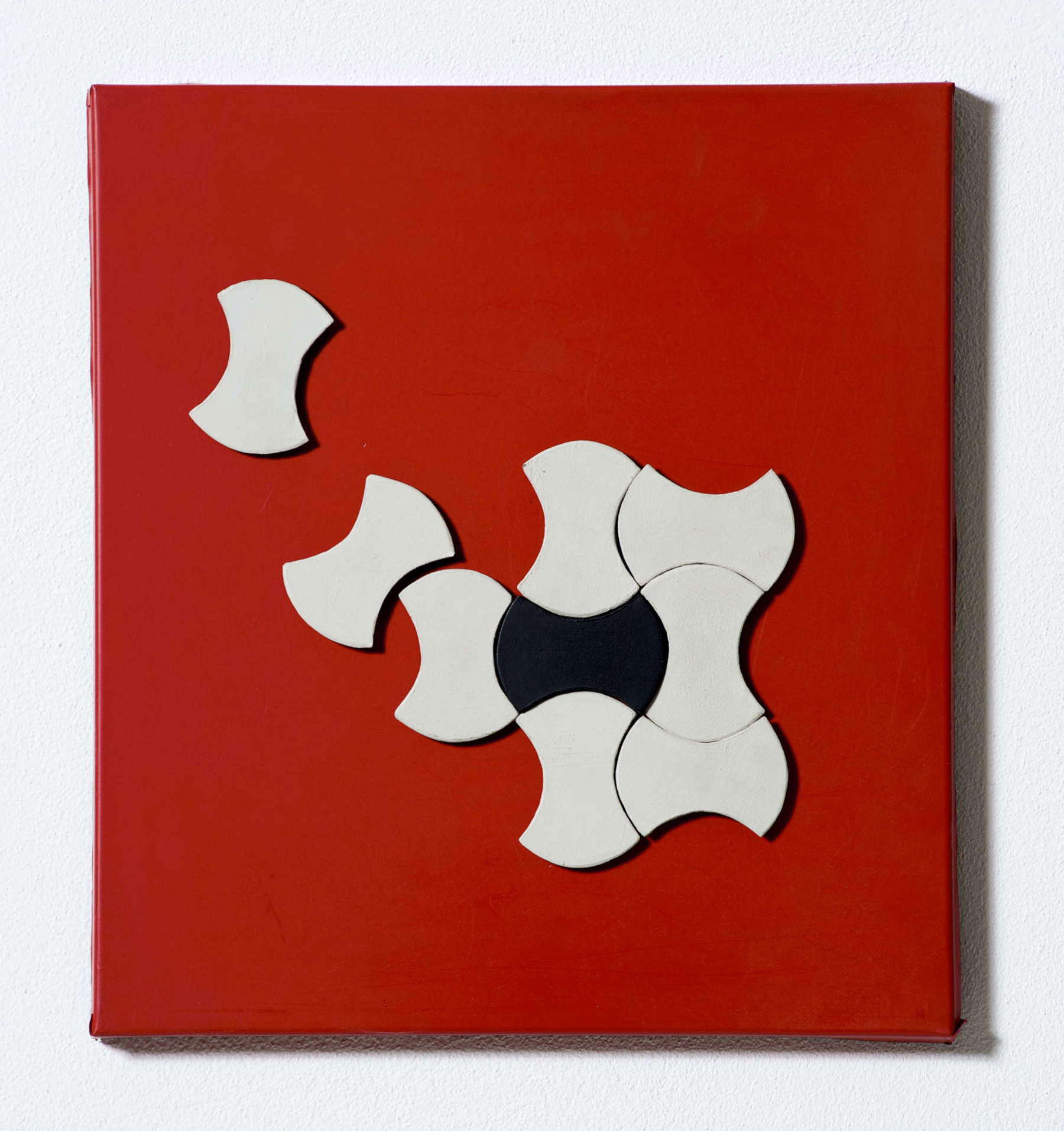
2. Variable Luminous Screens.
In the series Variable Luminous Screens, created between 1961 and 1968 and housed at the MA*GA Museum in Gallarate, Varisco is interested in light as a constantly changing phenomenon. It is energy from slow and rapid times that invades space. The work consists of a device composed of a strip of wood joining two panels placed at a reflective angle: one moves while the other remains static. The light inside comes from a circular neon lamp. Viewers can in this way observe the changing image, the result of the mechanical programming of the rotation and overlapping of the panels. The installation aims to broaden the variation of images and constantly maintain the viewer’s attention. The use of artificial light allows alternating light and darkness, combining two extremes by exploring perception through phenomena such asafter image, which is the manifestation of an image in viewing after a period of exposure to the original image;moiré effect, an optical phenomenon that occurs when two or more gratings are superimposed on each other creating an interference pattern; and color compensation, a technique in lighting engineering for correcting color and light.
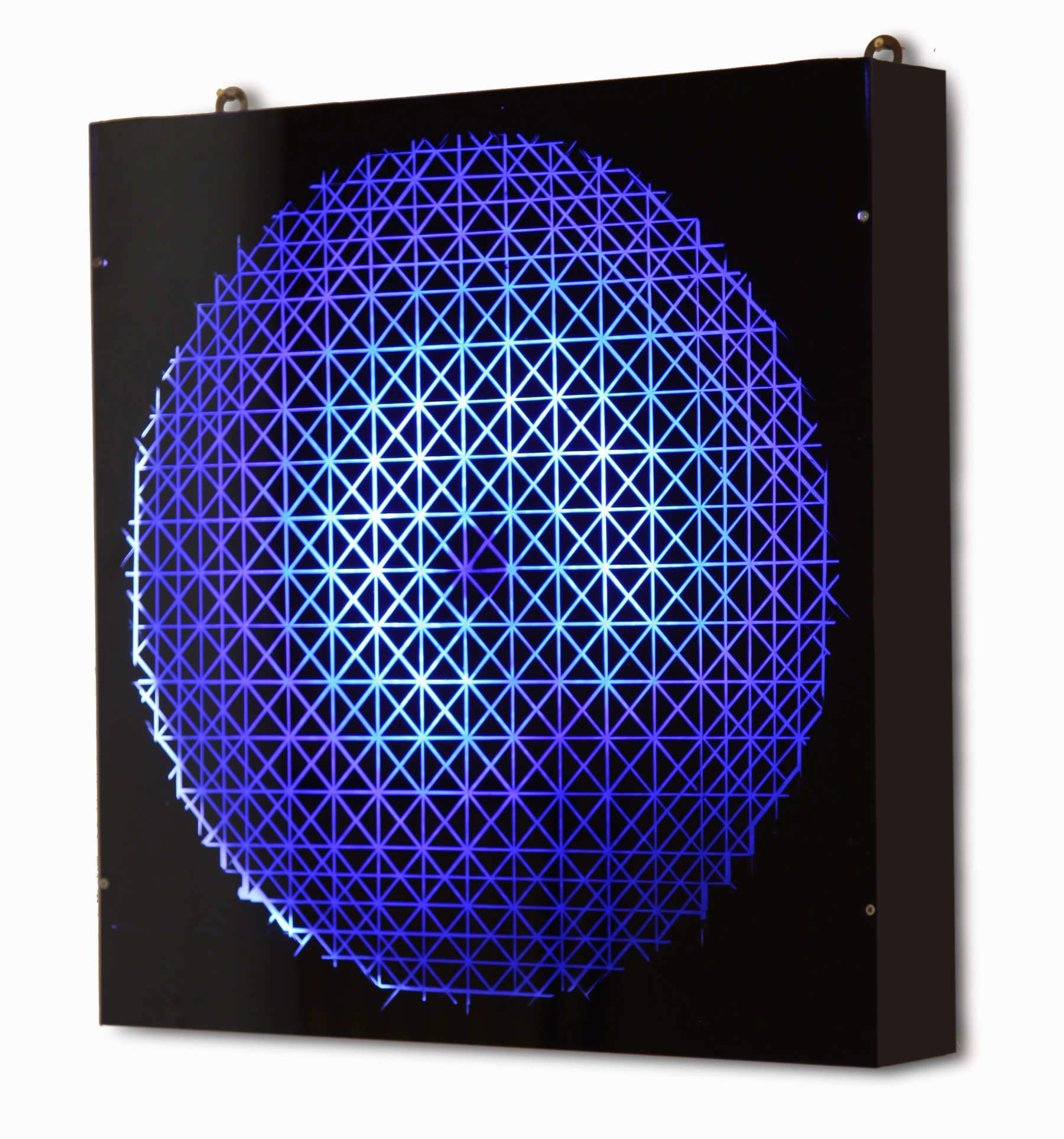
3. Mercurials
Through the Mercurials, a series created between 1965 and 1971, Grazia Varisco explores optical-kinetic variation using industrial glass with a lenticular surface. The glass refracts and changes the basic geometric pattern in response to the viewer’s movement. Beginning in the 1960s, the artist developed his artistic research with the works Mercurials and Fringible Reticles, exploring the concept of multi-stability of images. Indeed, the series is distinguished by the use of wire-reinforced glass. Glass interacts with polished chrome metal studs while materials such as magnets, image-altering industrial glass, an electric motor and light are chosen for their changing properties.
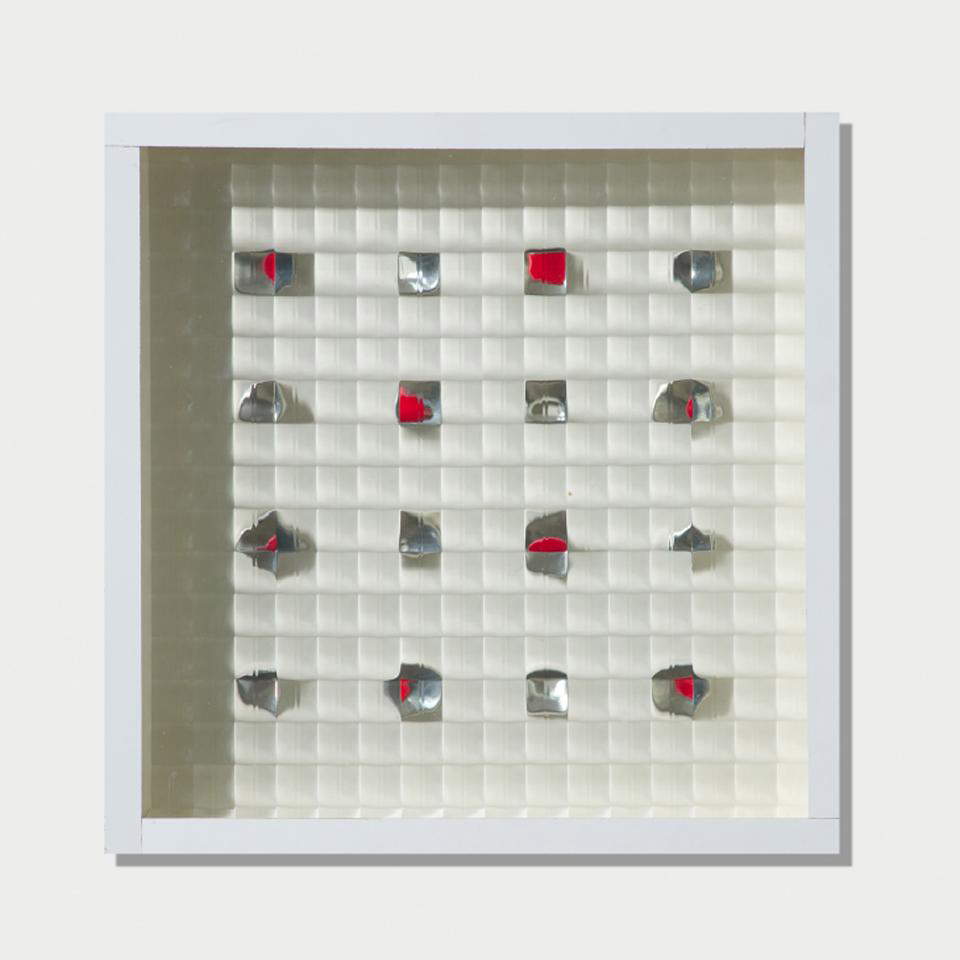
4. Fringible Reticles.
In Fringible Reticles, 1965-1971, the unpredictable variations of the images are the result of theinterference of the lattice of glass reinforced with wires with different marks. The installation represents a dynamic essence, indicating their distinctive characteristic of constant change. Breakable lattice works are transient, capturing attention with their elusive visual play and reorganizing into unpredictable forms. As in the Mercurials, new signs and depictions given by changes in the geometric pattern continually emerge, while the textures of the glass interfere with the signs, amplifying, reducing and hiding them from view. The colors, on the other hand, alternate, often contrasting, creating a dynamic of opposites.
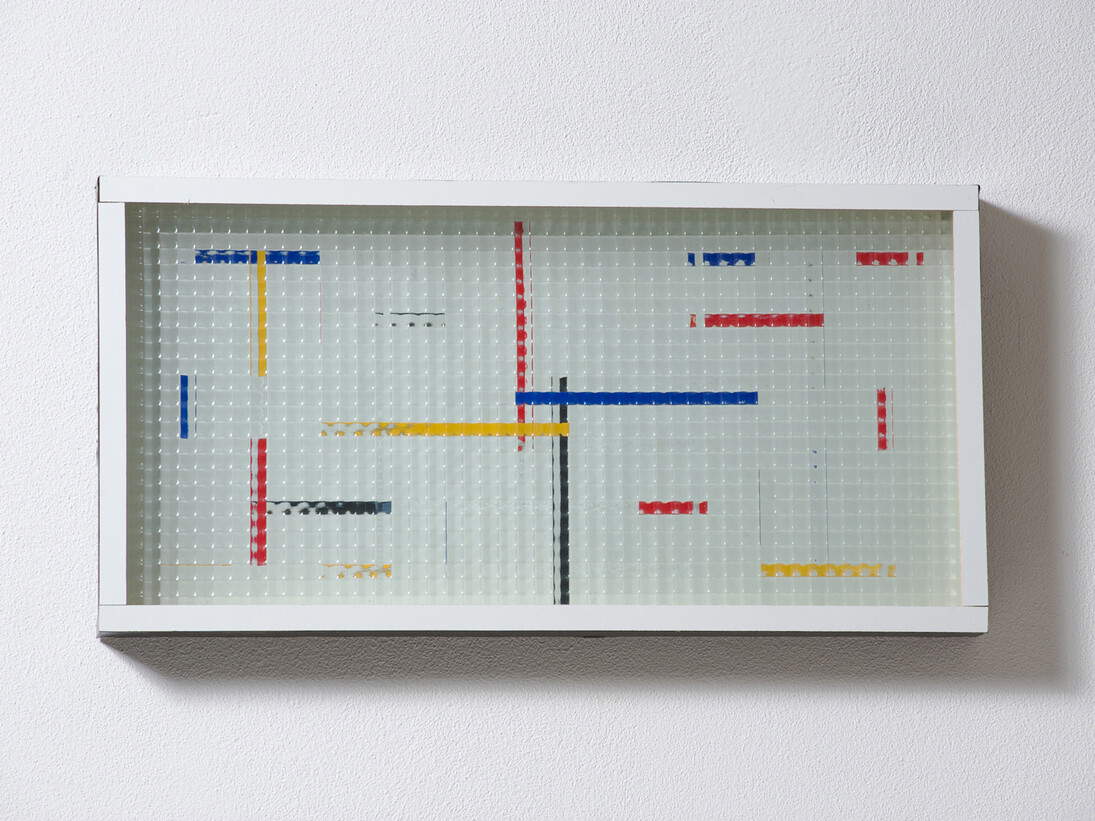
5. Sundial
In Varisco’s early works,kinetic art embraces futuristic ideas, with fragmented light representing an encounter with the industrial world. And so it was in 1974 that he created the work Meridiana, a work through which he recognized the value of matter in space. With wood, cardboard collage and a brass cabinet, he creates a texture that recalls the angles of the sundial. Light, in this context, gives a suspended temporal vision, playing with matter and light in harmony. In addition to this, the artist decides to name the rod of the sundial with the name Gnomon: its etymology comes from the word knowledge, which in this case represents the knowledge of time, of its passing, measured, by the displacement of the sign of the projected shadow.
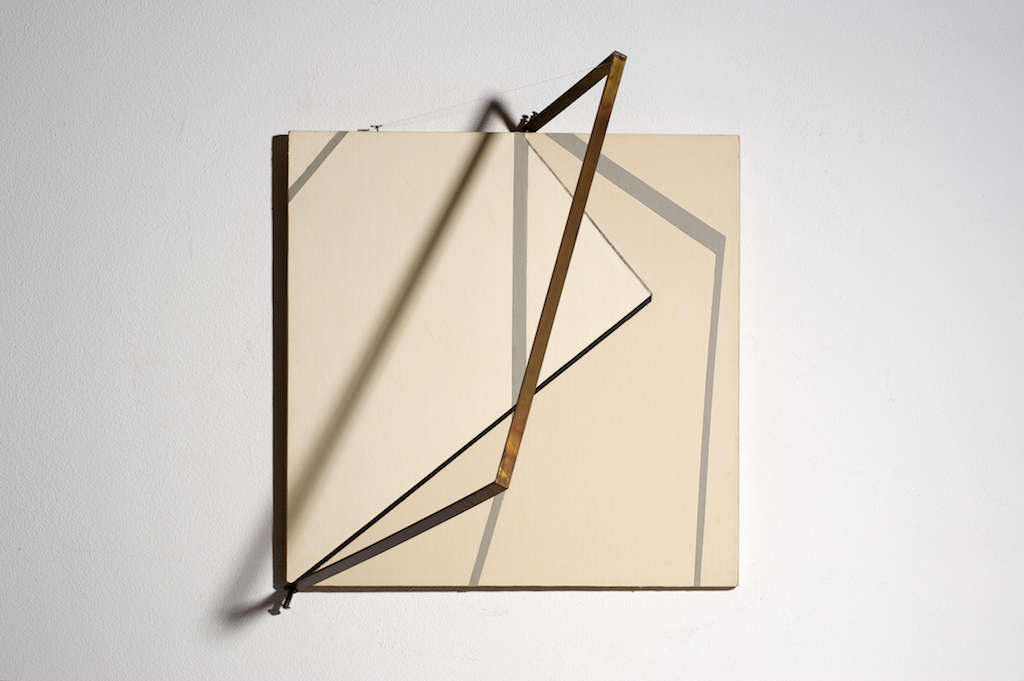
6. Extrapages
Extrapages, a series between 1974 and 1982, depicts yellow-hued pages and cards on a white background, annotations in the margins, openings and grids, designed with mixed media, collage and string on cardboard. Typography and bookbinding compose a microcosm of precision and perfection. For Grazia Varisco, her work is a combination of randomness and design, of paper and waste, initiated by a “shouldn’t happen” (stated by her insiders), but which sometimes manifests itself, between the pages of books, as an unexpected deviation from the norm.
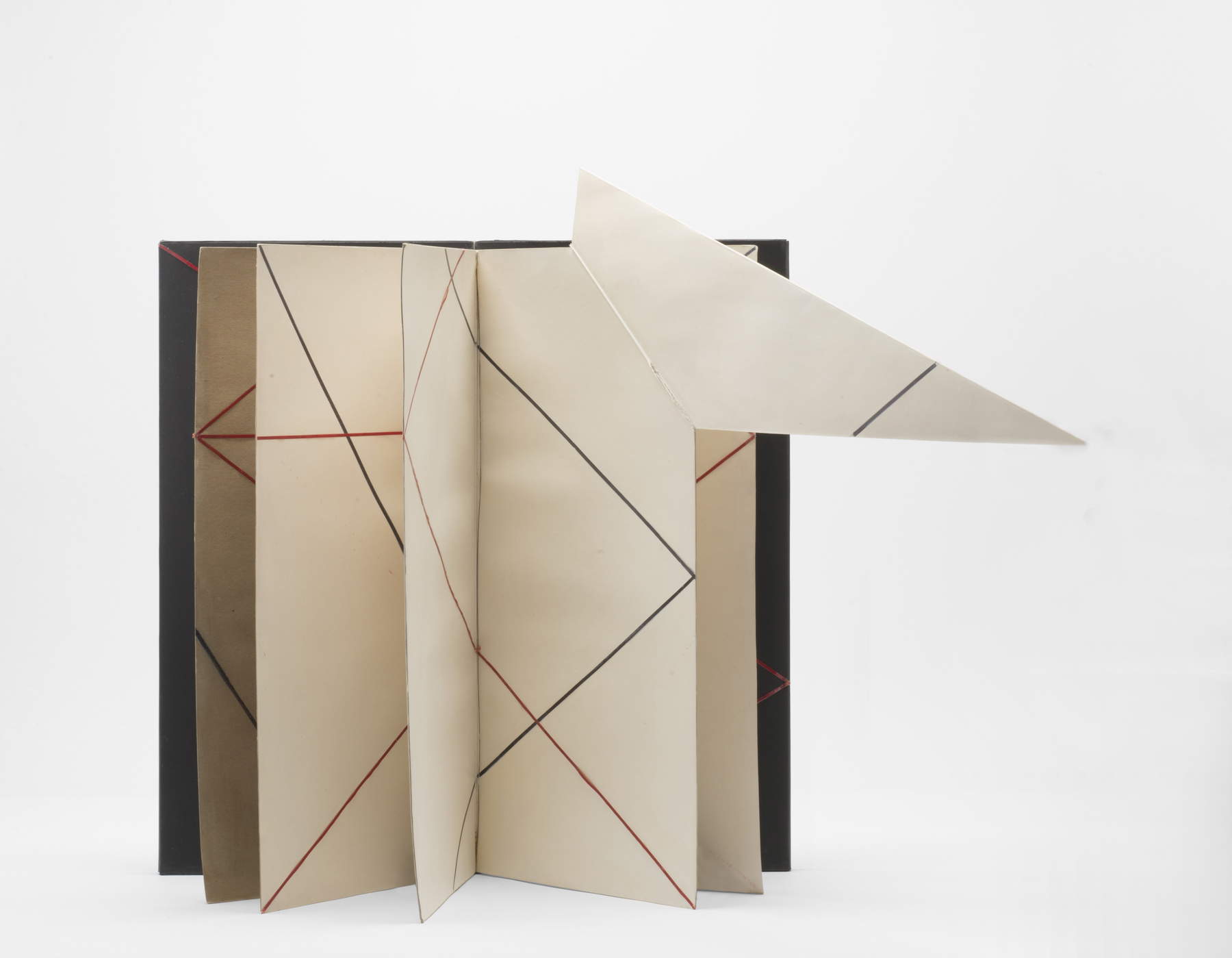
7. Gnomons
The series Gnomons, from 1975-1986 represent one of the explorations related to the operation of the fold, taken into analysis since the mid-1970s. In these works, folding is considered not as a mechanical act, but as a motif that generates different perceptual experiences in observers. The folds investigate the spatiotemporal dilations of surfaces and the interaction between light and shadow, both on a two- and three-dimensional plane. Through the act of folding, an association is made with the concept of lowering or crushing in common perception. In Gnomons, folding lifts and animates empty space rather than occupying it, involving the viewer in its movements. The resulting ambiguity captures the viewer’s gaze, inviting a visual exploration of the structure.
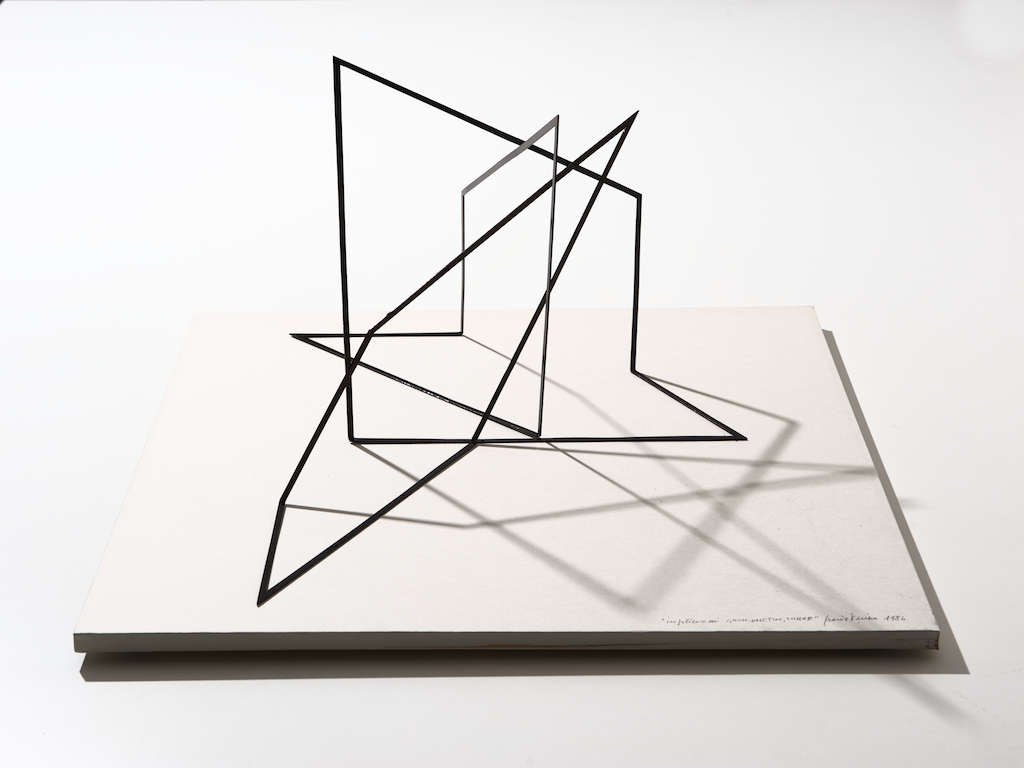
8. Duets
The sculptures that make up the series Duets, 1986-1989, are composed of two painted steel plates next to each other. Their proximity represents a double meaning: on the one hand it limits the space like a theatrical backdrop, while on the other it attempts to overcome the visual obstacle through the gap between the plates. Although they seem thin, the slabs come alive with light, showing forms in ever-changing perspectives. Duetto lends itself to a subtle play of opposites, such as positive/negative, oblique/orthogonal, empty/full, reflecting the human experience of the generation of life: the collision of elements that generate the matter of the universe. Through these works, Grazia Varisco represented three-dimensionality in a sign that seeks to be precise and minimalist. In fact, by moving from three to two to four dimensions, she tries to explain a concept of simple geometry.

9. Communicating Paintings.
Between 2008 and 2015, Varisco created the series Quadri Comunicanti. The works are arranged on a wall are mounted six rectangular black iron frames, arranged at different angles and regular intervals. Some are partially empty, leaving the wall visible, while others are partially filled with supermirror steel plates. The title of the series invokes the law of communicating vessels, metaphorically comparing the frames to vases: the metal sheets, resembling water surfaces, occupy the space in each frame to a uniform level. The arrangement of the frames follows the continuous line of the height of the liquid, that is, the metal fragments. The connection to thewater is represented by the use of steel, creating an unstable surface. In this Varisco decided to soften the reflective effect with satin-finishing, brushing and hammering interventions, altering the appearance.
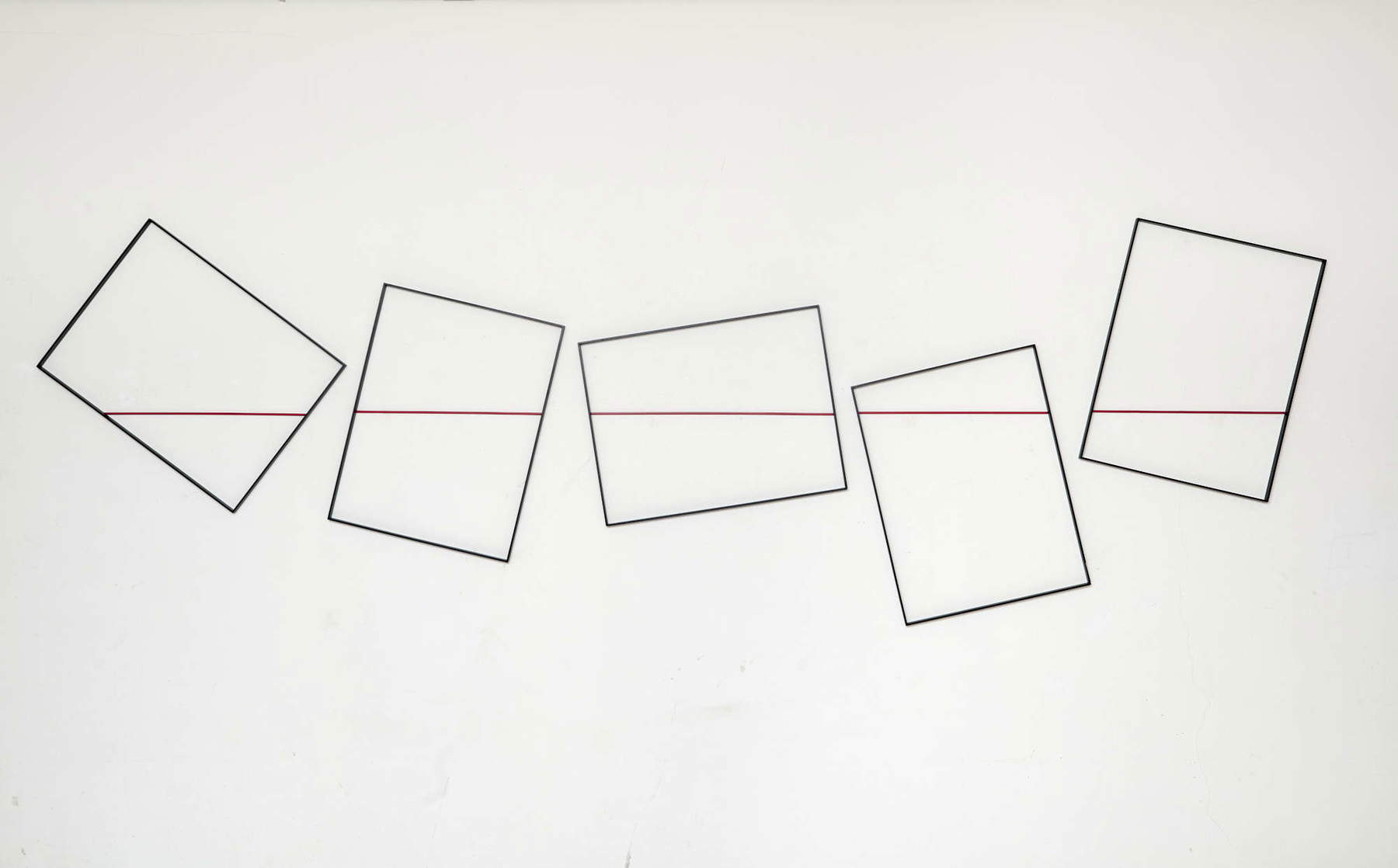
10. Resonances
Through Resonances to Touch, 2010-2016, Grazia Varisco invites viewers to interact with the work, without inhibitions, playing with the sense ofhearing through a multi-sensory experience. It consists of a laser-cut black painted iron plate.
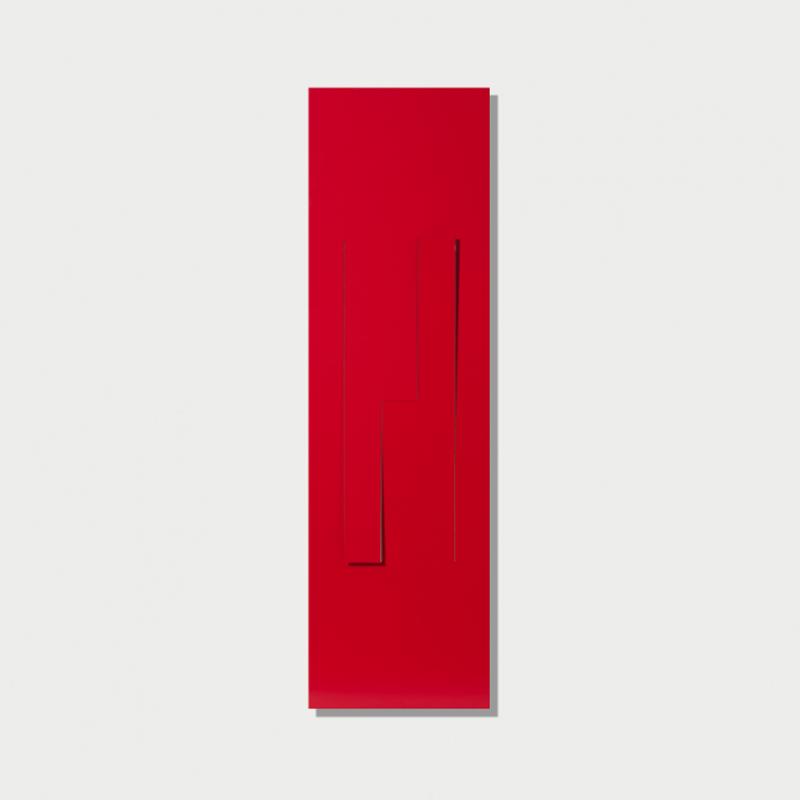
 |
| 10 works to learn about Grazia Varisco, pioneer of Italian kinetic art |
Warning: the translation into English of the original Italian article was created using automatic tools. We undertake to review all articles, but we do not guarantee the total absence of inaccuracies in the translation due to the program. You can find the original by clicking on the ITA button. If you find any mistake,please contact us.



























